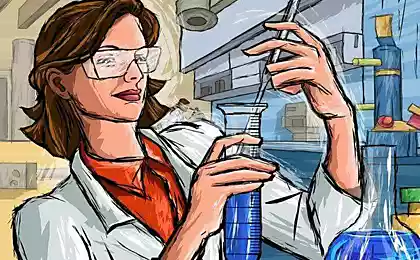867
Most mass delusion around Moore's Law
Drawing from the original article in 1965. Sup>
What happens if you ask almost anyone, from the readers of this blog and finishing Wikipedia, what's the lay Gordon Moore made the observation of the development of electronics? The answer will be doubling every few years, of all things, from the number of transistors and finishing performance.
But all this is only the investigation, but as it actually is - let's deal.
* Just want to say that I will not write about that, as already mentioned more than one (dozen?) Times. I'll try to be brief and to the point.
Original article 1965 written at a time when no company Intel has not existed, and its future founders were busy looking for ideas for their businesses. In particular, the driving force capable of making electronics truly massive. And the main obstacle to this was, first of all, the price.
Accordingly, the initial observation was that behaves as a single value of the transistor depending on the quantity and production technology.
For small (by the standards of a specific technology) devices, the cost per transistor almost inversely proportional to their number. But with the increasing number of transistors increases the chip area is reduced proportion yield of crystals during the production and, accordingly, increases the price.
It turns out that for each production technology has a certain level of complexity of the device (expressed by a number of transistors in their composition) for which the application of this technology is most profitable.
The transition to a new process is achievable when the price for a new transistor design rules is substantially lower than the current technology. It was made of a tenfold reduction of the cost forecast by changing the transistor process technology.
As for the number of transistors on a device for which the production of the most economically advantageous, according to forecasts, in the transition to the new technology, it really is doubled.
But firstly, this is a consequence of which can be obtained by constructing the minimum point coordinates value "year" - "the number of transistors."
Second, this prediction is not performed for a long time in its original form - it should be adjusted to the area of the crystal itself. Several recent technological processes instead of doubling the number of transistors bring only a marginal increase in their number and a significant reduction in the area of the crystal itself.
In fact, now, when developing a new microprocessor, the main limiter is not that what opportunities he should have, or what should be the performance. The main limiter - this is how much it should cost, from which everything else follows.
Moore's Law has been and remains the law of value. And many things would be understandable if people remember about it.
Did you know early on that side of Moore's Law?
Source: habrahabr.ru/company/intel/blog/237607/
10 performance indicators, for which the owner must follow every online store
Website NASA Solve and ideas competition to turn the ballast in the descent module in the payload
























